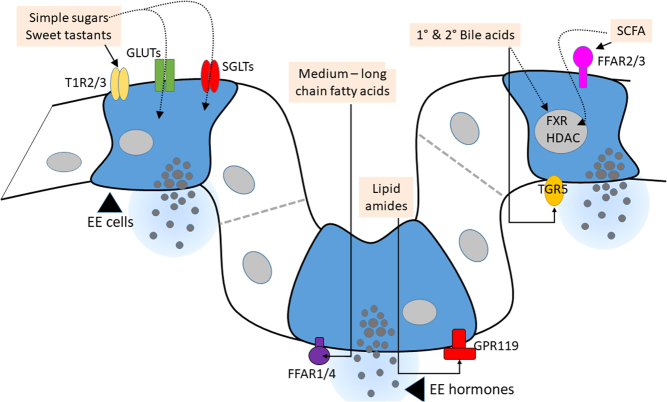Figure 2.
Activation of enteroendocrine (EE) cells. Carbohydrates in the gut lumen such as simple sugars are sensed by sodium-glucose transporters (SGLTs), glucose transporters (GLUTs) and sweet taste receptors (T1R2/3). Lipids are sensed basolaterally, with medium- and long-chain fatty acids activating free fatty acid receptors (FFARs) 1 and 4 and lipid amides activating G-protein receptor 119 (GPR119). EE cell secretion is also differentially regulated by individual bile acids, which signal through the GPCR, Takeda G-protein receptor 5 (TGR5) on the basolateral membrane and through the nuclear receptor, Farnesoid X receptor (FXR). Short-chain fatty acids (SCFAs) derived from bacterial fermentation of indigestible polysaccharides, also influence EE cell secretion through activating FFARs 2 and 3 and inhibiting histone deacetylases (HDACs).

 This work is licensed under a
This work is licensed under a 